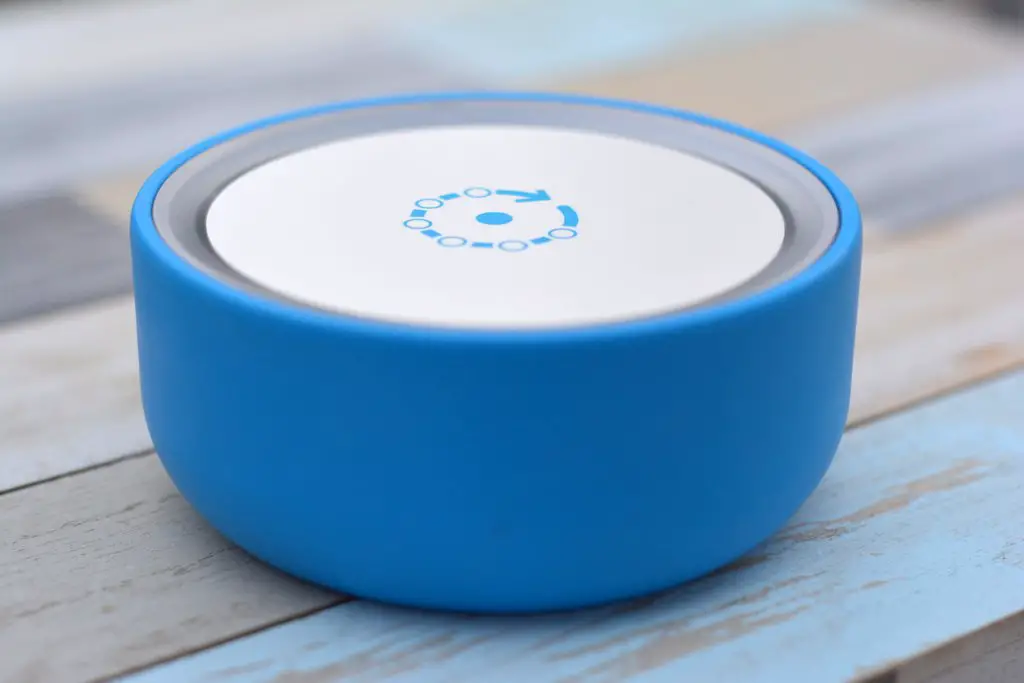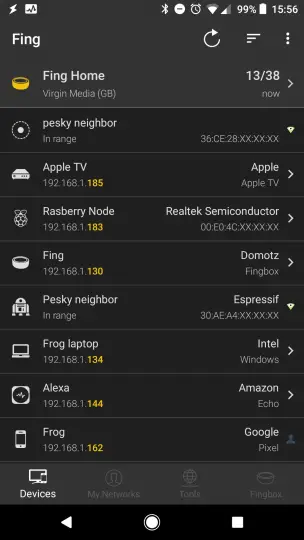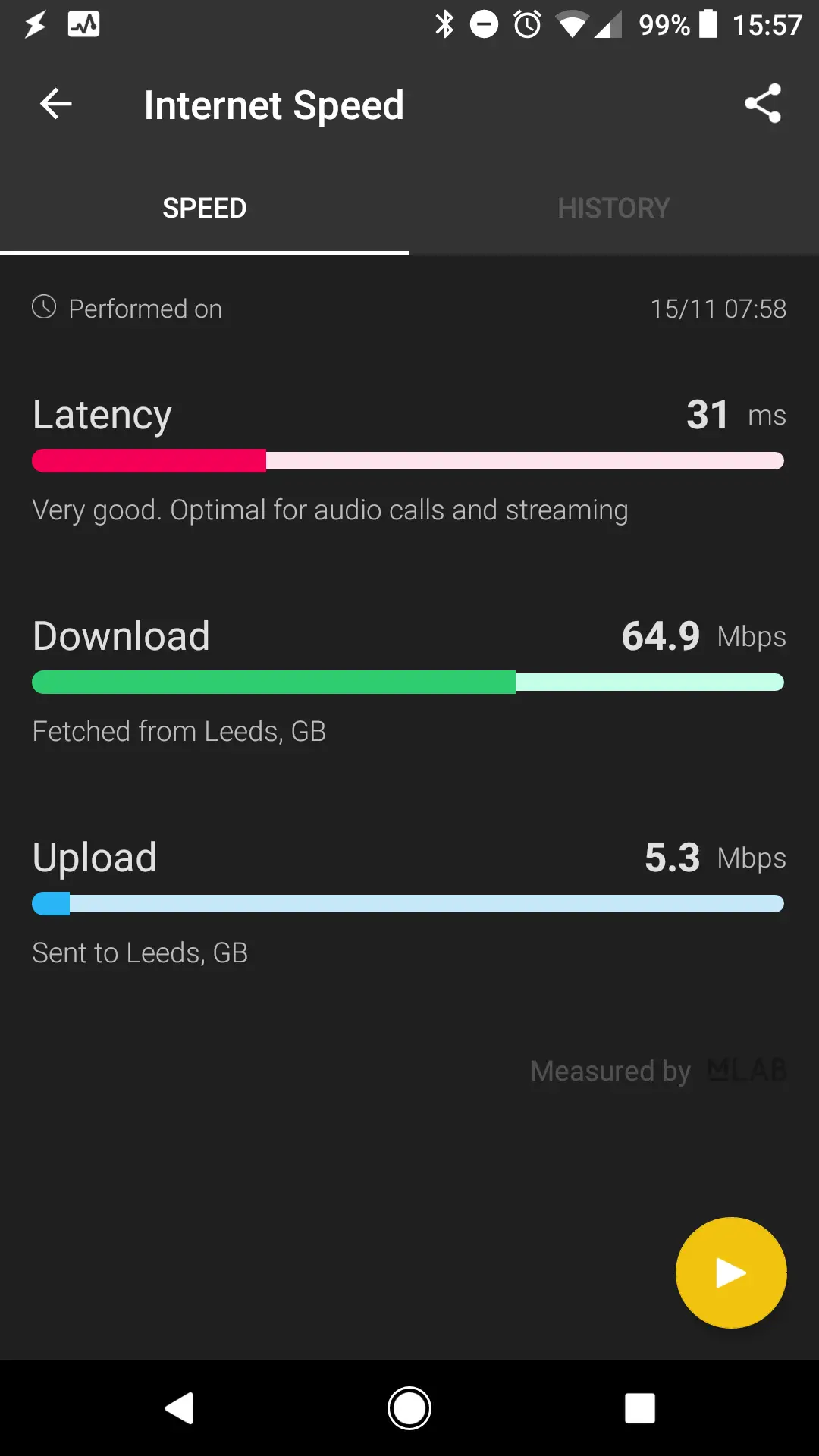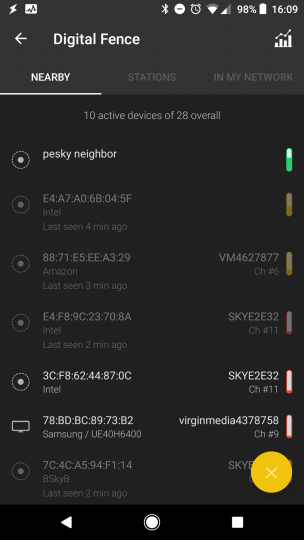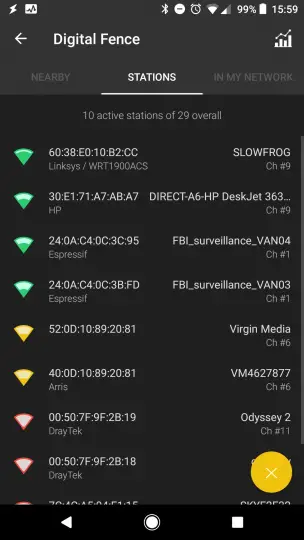Is Fingbox a worthy security upgrade to your network – review

There are plenty of networking tools out there but this one is mine. The Fing app is my weapon of choice when it comes to troubleshooting my network and supporting my networking projects. I wrote about the Fing app in detail previously, long story short – I like it. Last summer a successful Indiegogo campaign has been launched and Fing introduced a stand-alone solution to the networking problems: the Fingbox.
Fingbox
This Amazon Echo shaped device aims to alert you each time when something suspicious is happening on your local network, it’s only one of its tricks. Fingbox sits constantly connected to the router, monitoring LAN, devices, and general network use at home/work/coffee shop – enter the appropriate location here. I’m running the Fingbox alongside a fairly advanced router Linksys WRT1900AC. Both devices are similarly priced ($120+) and offer comparable features.
The main question I will try to answer in this review is: should you get a Fingbox, or invest in a similarly priced advanced router for your local network?
Before we go further let’s address the biggest elephant in the room. In a typical home scenario, Fingbox can be disconnected from the network physically, disabling any security, restrictions and rules set up previously within the Fing app. While you get notified of this fact, it’s not the best device to use as parental control measures.
Network Tools
Device information
The same set of information is available from the Fing app, however, only using Fingbox this information is available to you outside of your local network. You can get the MAC addresses, view logs, block internet or simply check what devices are online. You will also get a notification (email/phone notification) when a new device is connected or you have set up a notification for a particular device.
Wake On Lan
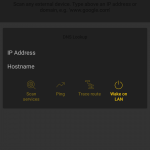 Devices that support WOL can be woken up directly from Fing. Note that you have to open up a port on your router and use a DNS or your network IP to do so from outside of your local network.
Devices that support WOL can be woken up directly from Fing. Note that you have to open up a port on your router and use a DNS or your network IP to do so from outside of your local network.
Speed & WiFi test
Basic tools to troubleshoot your speed and WiFi range are also provided. I wish these had automation or scheduling built in, but if you suspect that something is not right, you can always run it from the Fing app.
Bandwidth analysis
 Another useful tool in the Fingbox toolset is monitoring the data use. You can start the service and see how much data is sent to your devices, then determine which of your connected gadgets is the bigger data offender. You can group the devices by type or select the devices manually.
Another useful tool in the Fingbox toolset is monitoring the data use. You can start the service and see how much data is sent to your devices, then determine which of your connected gadgets is the bigger data offender. You can group the devices by type or select the devices manually.
Network Security

Digital Fence
This is a unique feature which is interesting. Fingbox is capable of looking at your WiFi network and scanning for the devices that are nearby, even though they are not connected to your router. This creates a sort of ‘early warning’ system. You can get a notification when a particular device is in the range of your WiFi. It’s totally feasible to set up a ‘neighbour is home’ alert if you know their mobile phone network signature. I’m not suggesting anything mean, but if you got a ‘we left your parcel with your neighbours’ this is a totally valid way to check if your neighbours are currently home.
Device blocking
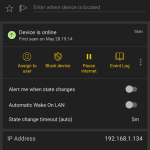 Another cool feature is one-click ability to pause or lock block the device on the internet. You can lock out a device permanently or set up a timeout. Block will disable the internet related functions entirely, and the pause will allow access to network printers etc.
Another cool feature is one-click ability to pause or lock block the device on the internet. You can lock out a device permanently or set up a timeout. Block will disable the internet related functions entirely, and the pause will allow access to network printers etc.
Port Scanning
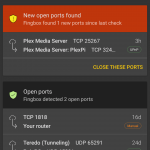 Fingbox will automatically scan your networks for open ports. It will tell you what ports are open and what devices are using these ports to communicate with the outside world.
Fingbox will automatically scan your networks for open ports. It will tell you what ports are open and what devices are using these ports to communicate with the outside world.
Privacy
To fully take the advantage of the Fingbox, some information about your network is shared with Fing services. The data about your network devices is stored on a server, which allows you to rename the devices, add notes and descriptions etc. This information is also accessible offline.
The full privacy policy can be accessed here: https://app.fing.io/privacy
I have not come across anything that would raise any suspicion, the collected information matches the services that are provided with the Fingbox.
Advanced Router vs Fingbox
 I’m going to ignore the fact that a new router could come with a better network range and data transfer and focus purely on commonly offered features by both devices.
I’m going to ignore the fact that a new router could come with a better network range and data transfer and focus purely on commonly offered features by both devices.
Parental Controls
If your main concerns are parental controls, the router is probably a better way to go. With advanced rules for each device and no ability to disable the blocks (other than connecting another router instead), it’s a clear winner here. Having said that, you would be hard-pressed to find a device that gives you instant notifications about changes in your network at that price range.
Network Tools
Fingbox is a clear winner for me. While routers offer pretty much the same information about the devices connected as the Fingbox would, it’s about the access to this information. Even though my Linksys comes with an app, the information is buried in a labyrinth of menus. Fing app is fast, info is available outside of your local area and you never have to browse long to find the info you need.
Network Security
It’s a Draw. Fing and Fingbox meant to compliment your router, not to replace it. It will inform you about the potential risks, but most of the legwork has to be done in the router interface to block unwanted open ports, secure the WiFi etc. Fingbox is a great tool to show you what needs to be done or blocking a device on the network. I wouldn’t personally rely on Fingbox to block a device on the network permanently. If I don’t want a device on the network, it has to be deauthorised rather than blocked. Fingbox offers temporary solutions that require follow up inside the router interface.
Conclusion
Fingbox provides you with network security and tools while staying relatively easy to use. I believe this is the biggest advantage of this device. Aimed at home users and perhaps small businesses, Fingbox and Fing app require very little knowledge to get the most important information about your network. While it’s possible to get better bang for your money in terms of selecting an advanced router, the learning curve can be steep. If you don’t feel like compromising the security of the devices in your local network, but you don’t want to go through a painstaking setup of a professional grade equipment, Fingbox is your friend.
And if you want to get Fingbox for yourself – use NOTENOUGHTECH for a $10 of your order.
[tabs tab1=”Disclaimer”] [tab id=1]The Fingbox has been provided to me for the purpose of the review. As usual, with all my reviews I reserve the right to an honest critique of the product.[/tab] [/tabs]
